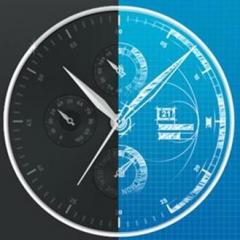TAG Heuer - Removing Rotating Bezel - Help Needed
-
Recently Browsing
- No registered users viewing this page.
-
Topics
-
Posts
-
…the nominal status at my house is ‘they are so common I have plenty…but used the last one last time 😔’…
-
Nice 🤩! Maybe less elaborate than a Luthy but surely equal useful. Cause you lack my Electronic Box? 🙂 Frank
-
Posting a photo of the keyless works may at least give some guide to the manufacturer.
-
poising and the right discussion group with the right people it can become an extremely heated conversation like so many other things in watch repair. but it really shouldn't be an issue as long as everybody understands what they're supposed to be doing and why? the first and most interesting problem we have is what exactly is the poise balance wheel? Now understand the question we need to clarify and to clarify we need timing specifications that typically do not exist for vintage watches. so the overly simplistic of all of this is you only have a poise problem if the positional timing is outside of the specifications of the particular watch your working on. now the quote above isn't quite right the reference to a new balance wheel if you purchase a new balance wheel it's supposed to be poised from the factory. but it's only going to be poised to whatever the factory specifications are if you're expecting your whatever to be a chronometer then it's not going to be poised to your specifications. Then on any modern balance wheel without screws you shouldn't have to poise at all? For instance here's an interesting link on poising. What makes it interesting is that the balance wheel he showing is a modern balance wheel that really does not need any adjusting at all as it would be within the specifications of the factory but he is still going to show you how to do it anyway. https://great-british-watch.co.uk/how-to-poise-a-balance-wheel/ so is poising necessary sometimes. How do we know poising as necessary? Easy put it on the timing machine look at the watch in four positions is the timing outside of whatever you perceive the specifications are supposed to be for your watch? I was looking at some of the watches that I do have timing specifications and so far the greatest I've seen is one minute of out of poise would be considered acceptable at a fully wound up watch. so positional errors get all kinds of differing numbers depending upon the specifications.
-
By Neverenoughwatches · Posted
So this was something I bought a few years ago. I've always been interested in how hairsprings work, and pretty good at the manipulation of them from day one, mostly because I have rock steady hands and very good dexterity. Watching guys hands on the UTube flutter around when working on hairsprings....🤔 makes me wonder whats going on ? I may be just very lucky in that respect. This isn't the better, more expensive Luthy, but it works lovely. I have only used it once to check a hairspring's frequency, something unnecessary, as a timing machine can do just that, but it was accurate compared against. I guess these things were a timesaver, after pinning a new hairspring to a collet, something I might never do, but probably will 😄
-








Recommended Posts